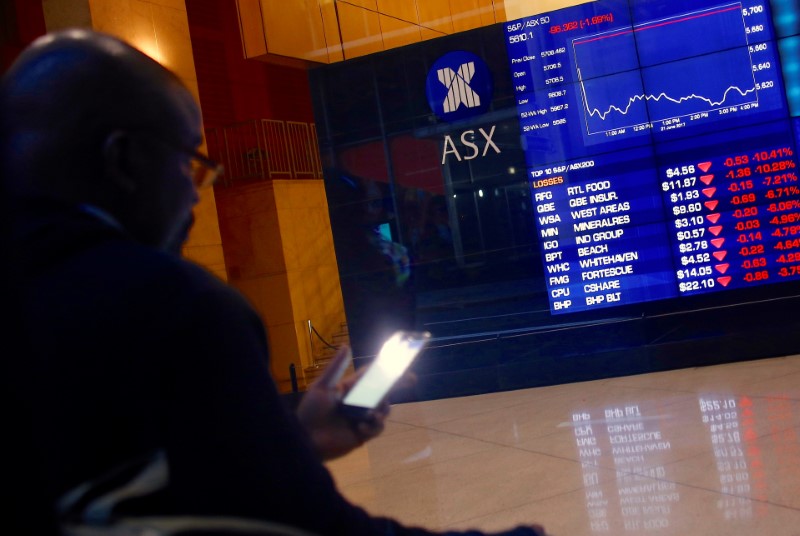The ASX200 is set to climb 0.22% or 16.5 points as of 9 am AEST, as it pursues a course to recover some of the losses from last week.
The Australian bourse had a dismal showing over the previous five trading days, dropping a total of 2.84% after finishing down 0.98% on Friday and avoiding an even worse intra-day fall of 1.96%.
It was the worst performance the index has offered since about mid-September last year.
In contrast, nickel hit its highest level since the market stumbled last September after a 5.5% jump that later pared back, and copper is at a two-year high, having lifted 16% in the last two months, while gold is still flirting with record highs.
It remains to be seen how these commodity price increases will translate into our resource-heavy market.
What happened overnight?
US and European markets (source:Commsec)
US markets were mostly down both on Friday and throughout last week, although the Dow Jones managed to buck that trend.
A 6.2% jump in American Express (NYSE:AXP) stock led by above-expectation first quarter profits buoyed the Dow and Paramount Global (NASDAQ:PARA) shares surged 13.4% on news Sony Pictures Entertainment and Apollo Global Management (NYSE:APO) are in discussions to make a joint bid for the streaming provider.
The red side of the ledger is a little more extensive today – tech and semiconductor shares fell overall.
Netflix (NASDAQ:NFLX) dipped 9.1% after announcing the streaming giant would no longer announce subscriber numbers, indicating the race to acquire more of the streaming audience share may have come to an end as potential user pools are tapped out.
The Philadelphia Semiconductor index dropped 4.1% as chip makers and AI stocks Nvidia and Super Micro Computer slipped, shedding 10% and 23.1% respectively.
The Dow managed a 0.6% or 211-point lift, having gained 0.01% over the last week.
The S&P 500 slipped 0.9%, down a full 3.1% last week, while the Nasdaq shed 2.1% or 319.5 points, down a whopping 5.5% over the previous five days of trading.
In Europe, markets were largely unmoved.
Retail stocks slipped 0.6% on flat sales in the UK, far below expectations of a 0.3% uplift. As in the US, tech stocks dragged markets lower, down 1.8% but mostly offset by a 1.1% lift in telecom stocks.
Interest rate cuts may soon be in sight for the EU, as ECB President Christine Lagarde signalled inflation is likely to fall further in the Eurozone, opening the door to an easing in monetary policy.
The FTSE300 dropped marginally with a 0.1% dip while the FTSE100 gained 0.2% - both indexes lost about 1.2% last week, their worst performances since January.
Currencies and commodities
The Euro and Aussie dollar gained against the greenback overnight, but the Japanese Yen was unable to match their progress.
The Euro rose from US$1.0627 to near US$1.0655, the Aussie from US63.94 cents to near US64.15 cents and the Yen fell from 154.22 yen per US dollar to near JPY154.65 at the US close.
Oil lifted slightly on Friday but declined overall during the week. Tensions in the Middle East continue to threaten supply chains but the recent beef between Iran and Israel appears to be settling down, with the Iranian government downplaying Israel’s retaliation to a drone and missile strike.
Brent rose US 18 cents or 0.2% to US$87.29 a barrel but shed 3.5% over the week while Nymex lifted US41 cents or 0.5% to US$83.14 a barrel but ended down 2.9% for the last five days.
As stated above, base metal and gold both appreciated on Friday.
Copper futures lifted 1.4%, and aluminium added a strong 3% after the White House and Down Street moved to block new Russian aluminium from being sold in the London Metals Exchange and Chicago Mercantile Exchange warehouses.
Over the week, copper lifted 5.7% while aluminium added 10%.
Iron ore followed them up, lifting 0.3% or US30 cents to US$108.25 a tonne, a second straight weekly gain netting 2.1% as consumer demand from China increased.
Gold continued to perform strongly, with futures gaining US$15.80 or 0.7% to US$2,413.80 an ounce on Friday. Spot gold was trading near US$2,390 an ounce.
The precious metal notched a fifth straight week of gains, up a total of 1.7% as continued geopolitical turmoil raises the attraction of the safe haven asset – with much of the demand driven by China’s central bank, retail shoppers, fund investors and futures traders.
On the small cap front
The ASX Small Ordinaries took a beating on Friday, falling 1.51% or 45.4 points compared to the ASX200’s 0.98% dip.
You can read about the following and more throughout the day on our website.
